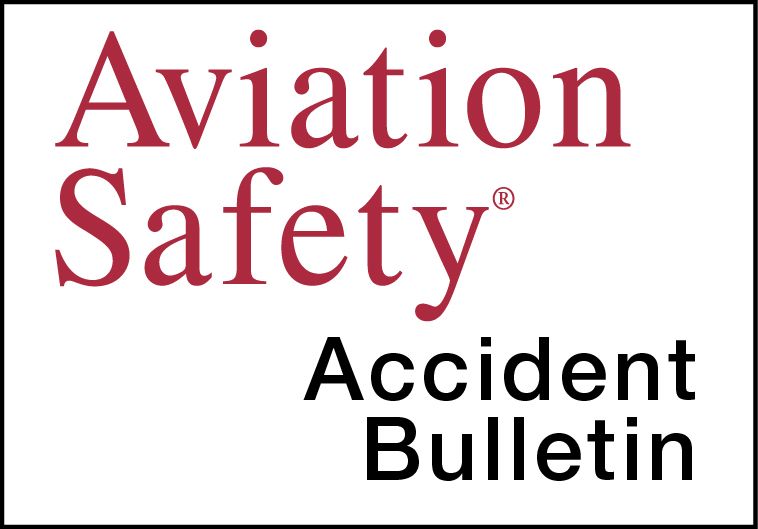AVweb’s General Aviation Accident Bulletin is taken from the pages of our sister publication, Aviation Safety magazine. All the reports listed here are preliminary and include only initial factual findings about crashes. You can learn more about the final probable cause on the NTSB’s website at www.ntsb.gov. Final reports appear about a year after the accident, although some take longer. Find out more about Aviation Safety at www.aviationsafetymagazine.com.
February 11, 2022, Katy, Texas
Mooney M20J 201
The airplane was substantially damaged at about 2006 Central time when it collided with terrain short of the runway. The pilot and passenger sustained serious injuries. Visual conditions prevailed.
After overflying the airport at about a GPS altitude of 1075 feet, the airplane turned onto a left downwind leg to land on Runway 15. The airplane turned on final approach at about 650 feet and descended, colliding with a tree on a golf course, and came to rest about 500 feet short of the runway. The left wing and empennage were damaged.
February 13, 2022, Olathe, Kan.
Piper PA-46-500TP Malibu Meridian
At 1020 Central time, the airplane was destroyed when it crashed during an attempted takeoff. The pilot was fatally injured. Visual conditions prevailed; an IFR flight plan had been filed.
The airplane reportedly had recently undergone an annual inspection; the accident flight was to return it to its base. About one minute after ATC cleared the flight for takeoff, the pilot transmitted, “We gotta come back around,” and was immediately cleared for landing. No further transmissions were received from the accident airplane.
The airplane impacted on the extended runway centerline about 400 feet past the runway’s departure end. A post-impact fire burned the wings and forward fuselage.
February 13, 2022, Beaufort, N.C.
Pilatus PC-12/47E
The airplane was destroyed at about 1402 Eastern time when it impacted the Atlantic Ocean. The commercial pilot, student pilot and six passengers were fatally injured. Instrument conditions prevailed; the flight was operating on an IFR clearance.
The airplane departed Engelhard, N.C., at about 1335 and requested an IFR clearance. At 1338, ATC advised that the nearby restricted airspace was active. The pilot confirmed they would remain clear of the airspace but entered it anyway, forcing ATC to constrain the military aircraft operating in it. After multiple ATC calls with no response from the pilot, the pilot requested an approach into Beaufort, N.C. When ATC queried the pilot about the missed calls, the pilot responded that he “was trying to get out” and was unable to receive the radio transmissions, according to the NTSB.
The flight was cleared to cross an initial approach fix at or above 1900 feet MSL. A series of heading and altitude excursions ensued. At 1358:46, ATC issued the altimeter setting because the airplane was at 1700 feet. The pilot read back the altimeter setting correctly, and that was the last transmission from the airplane. At 1401, ATC called the airplane after observing it was at 4700 feet MSL and climbing quickly. There was no response. Radar contact was lost at 1402; the airplane impacted the Atlantic Ocean and sank in about 60 feet of water.
February 15, 2022, Culebra, P.R.
Britten-Norman BN-2A-9 Islander
At about 0950 Atlantic time, the airplane’s crew apparently lost directional control while landing. The pilot receiving instruction, flight instructor and pilot-rated passenger were not injured. Visual conditions prevailed.
The pilot receiving training had recently retired from flying large transports and had been hired by the aircraft operator. The accident occurred on the first landing of his first flight, and first-ever landing at the accident airport, which the operator considered a “special airport” due to a short runway and challenging environment. The instructor described a stabilized approach at 70 knots. He said the pilot made a three-point, flat landing and the airplane turned right almost immediately. When asked, the instructor said it was not a hard landing.
Examination revealed the aft portion of the right wing was pushed upward at the wing root, resulting in substantial damage to the right wing. Witness marks consistent with propeller strikes were observed on the runway and the right propeller blades displayed tip curling.
This article originally appeared in the May 2022 issue of Aviation Safety magazine.
For more great content like this, subscribe to Aviation Safety!


































